
Harold Eugene "Doc" Edgerton, also known as Papa Flash, was an American scientist and researcher, a professor of electrical engineering at the Massachusetts Institute of Technology. He is largely credited with transforming the stroboscope from an obscure laboratory instrument into a common device. He also was deeply involved with the development of sonar and deep-sea photography, and his equipment was used in collaboration with Jacques Cousteau in searches for shipwrecks and even the Loch Ness Monster.
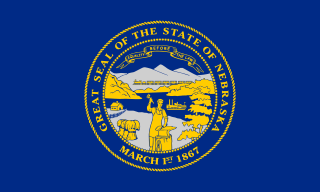
Nebraska is a triply landlocked state in the Midwestern region of the United States. It borders South Dakota to the north; Iowa to the east and Missouri to the southeast, both across the Missouri River; Kansas to the south; Colorado to the southwest; and Wyoming to the west. Nebraska is the 16th largest state by land area, with just over 77,220 square miles (200,000 km2). With a population of over 1.9 million, it is the 37th most populous state and the 7th least densely populated. Its capital is Lincoln, and its most populous city is Omaha, which is on the Missouri River. Nebraska was admitted into the United States in 1867, two years after the end of the American Civil War. The Nebraska Legislature is unlike any other American legislature in that it is unicameral, and its members are elected without any official reference to political party affiliation.

The University of Nebraska–Lincoln is a public land-grant research university in Lincoln, Nebraska, United States. Chartered in 1869 by the Nebraska Legislature as part of the Morrill Act of 1862, the school was the University of Nebraska until 1968, when it absorbed the Municipal University of Omaha to form the University of Nebraska system. It is the state's oldest university and the flagship institution of the state-wide system. The university has been governed by the Board of Regents since 1871, whose members are elected by district to six-year terms.

The Joslyn Art Museum is a fine arts museum in Omaha, Nebraska, United States. It opened in 1931 at the initiative of Sarah H. Joslyn, in memory of her husband, businessman George A. Joslyn. Since its opening there have been multiple building expansions to house the museum's growing collection. It is the only museum in Nebraska with a comprehensive permanent collection. Some of the main works in the museum are part of the nineteenth and twentieth-century collections of American and European artists.

The Sheldon Museum of Art is an art museum in the city of Lincoln, in the state of Nebraska in the Midwestern United States. Its collection focuses on 19th- and 20th-century art.
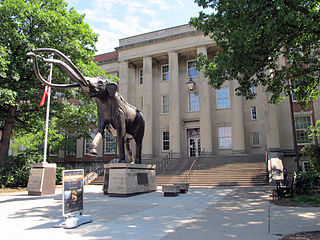
The University of Nebraska State Museum, also known as Morrill Hall, founded in 1871, is a natural history museum featuring Nebraska biodiversity, paleontology, and cultural diversity, located on the University of Nebraska–Lincoln City Campus near the corner of 14th and Vine Streets in Lincoln, Nebraska, United States. The museum houses Mueller Planetarium, a hands-on science discovery center, and the Elephant Hall, where visitors can see the world's largest articulated fossil mammoth among the collection of fossil elephants. Also featured are interactive paleontology exhibits, a dinosaur gallery, ancient life and evolution exhibits, wildlife dioramas, gems and minerals, American Indian and African exhibits, and a temporary exhibit gallery featuring rotating displays on diverse topics including photography, quilts and fine arts.
Jean Conner née Sandstedt is an American artist.
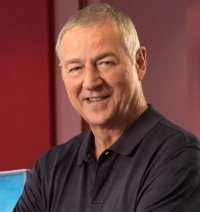
James Howard Goodnight is an American billionaire businessman and software developer. He has been the CEO of SAS since 1976, which he co-founded that year with other faculty members of North Carolina State University. As of April 2023, his net worth was estimated at US$7.4 billion, making him the richest person in North Carolina.
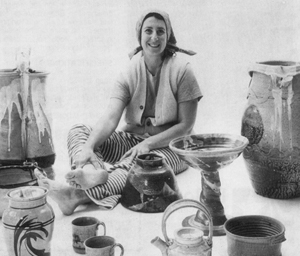
Elizabeth Woodman was an American ceramic artist.

The Great Plains Black History Museum currently resides on the first floor of the historic Jewell Building in North Omaha, Nebraska. It was formerly located at 2213 Lake Street in the Near North Side neighborhood in North Omaha. It was housed in the Webster Telephone Exchange Building, which is listed on the National Register of Historic Places. A nationally renowned institution for more than 40 years, the museum includes more than 100,000 periodicals, manuscripts, photographs and research materials. The museum currently conducts programs and presents exhibits throughout Omaha, the State of Nebraska, regionally and nationally upon request.

Veryl Goodnight is a sculptor and since 2006 has been living in Mancos, Colorado. She is known for her equine sculpture - in particular a realistic depiction of horses, often in an American West context. She was inducted into the National Cowgirl Museum and Hall of Fame in Fort Worth, Texas, in 2016.
Waldo Rudolph Wedel was an American archaeologist and a central figure in the study of the prehistory of the Great Plains. He was born in Newton, Kansas to a family of Mennonites.
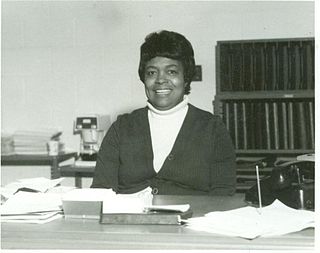
Bertha Calloway was an African-American community activist and historian in North Omaha, Nebraska. The founder of the Negro History Society and the Great Plains Black History Museum, Calloway won awards from several organizations for her activism in the community and Nebraska. "I Love Black History" was the former website for the Bertha W. Calloway Center for the Research and Study of African and African-American History, Art, and Culture and the Great Plains Black History Museum before it.
Olaf Wieghorst was a Danish-American painter who specialized in depictions of the American frontier. His art was in the vein of Frederic Remington and Charles Russell. In 1992, he was inducted into the Hall of Great Westerners of the National Cowboy & Western Heritage Museum.
The J. Wayne Stark Galleries is an art museum on the campus of Texas A&M University in College Station, TX. It is run by the University Art Galleries Department, which is a part of the Division of Student Affairs. The art gallery is named after J. Wayne Stark, the first director of the Memorial Student Center.

Lincoln, Nebraska is the home of the state capitol of Nebraska, the University of Nebraska and has history dating back to the mid 1800s. A list of tourist attractions that can be found within the city are as follows.
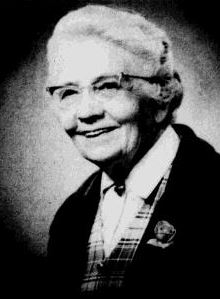
Kady Faulkner (1901–1977) was an American muralist, painter and art instructor who gained recognition in the middle of the 20th century. Her works are in the permanent collections of the Smithsonian American Art Museum, the Pennsylvania Academy of the Fine Arts, and the Great Plains Art Museum, as well as others. She was selected to work on the United States post office murals project of the U.S. Treasury during the New Deal and completed a mural for the Valentine, Nebraska post office. A mosaic by Faulkner in Kenosha, Wisconsin adorns the former bakery on the Kemper Hall grounds. She was an associate professor of Art at the University of Nebraska–Lincoln between 1930 and 1950 and then instructed headed the Art Department at Kemper Hall until her retirement.
Lyman Byxbe (1886–1980) was an American artist. He was primarily an etcher, and he spent much of his life in Nebraska.

Ruth Olive Rosekrans Hoffman was an American children's book illustrator and painter, known as Rosekrans Hoffman professionally.
John Johnson (1879–1953) was an American photographer. His photographs are considered among the few documents of the early 20th-century African-American community in Lincoln, Nebraska.














